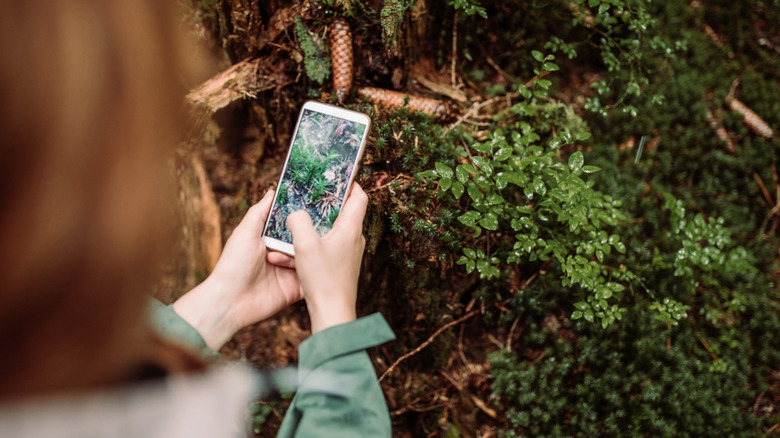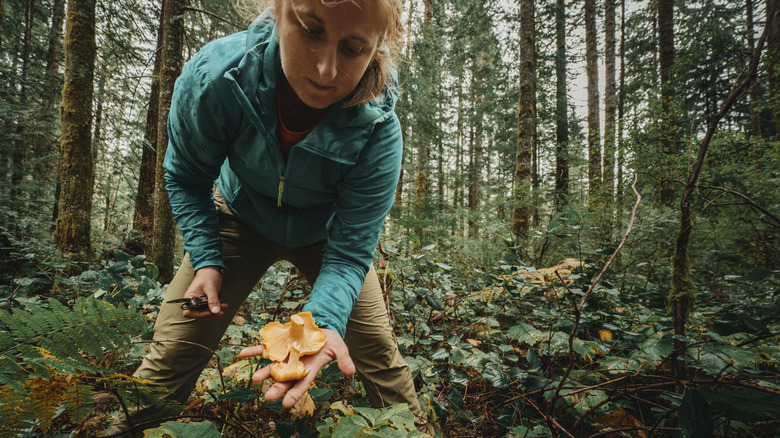The Dangerous Shortcoming Of Plant Identification Apps While Foraging
Foraging is a great hobby for those who love the outdoors because it not only encourages physical activity by requiring participants to walk around and explore an area, but also because it can help those who do it better connect to the land and the changing seasons. Foraging can also ensure that you get a wide variety of vitamins and can help you eat seasonally. However, the key to successful foraging is distinguishing which plants are healthy and safe to eat from certain plants that may be harmful. While it may be tempting to turn to one of the many plant identification apps to help you out in these situations, the problem with these apps is that they may not always get it right. To find out more about this, we spoke to Alan Muskat, foraging educator at No Taste Like Home.
"When you forage, you use all your senses," shares Muskat. "This is one reason an app can fall short. Sometimes two plants or two mushrooms, only one edible, look very similar but smell or taste different. Apps do not smell things. They also don't look at the environment. They don't look at what the mushroom was attached to. There are mushrooms that look similar but one will only grow on wood, the other only in soil." He stresses, "There are dozens of details to pay attention to." So, if apps aren't a reliable tool for plant identification, what should you do instead?
Plant identification apps should be used as a supplement
While you should never rely on plant identification apps while foraging, that doesn't mean they are not useful at all. In fact, they are often one of those apps that many outdoor enthusiasts love. "Media, from books to videos to apps, can help, but they should be a supplement, not a substitute," explains Muskat, adding, "I have been amazed at apps correctly identifying plants at least some of the time. Mushroom ID apps, however, leave much to [be] desired." This can be a problem for foragers because certain edible types of mushrooms can be quite difficult to distinguish from their dangerous lookalikes, which is one reason why mushrooms are the last thing you should eat off the trail, even in emergencies.
To solve this problem, Muskat says that his "#1 beginner tip is to learn from a real field guide." Another fantastic option is to take a plant identification course. "There are competent foraging educators around the country," Muskat says. He also notes that "[his] company, No Taste Like Home, offers in-person foraging classes, and no one is turned away for lack of funds." You can also find more helpful foraging information on Muskat's website, like his article on the key to safe mushroom hunting.

